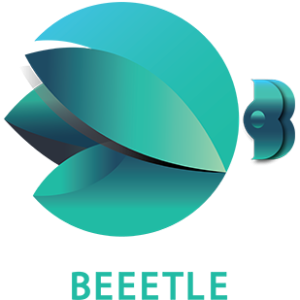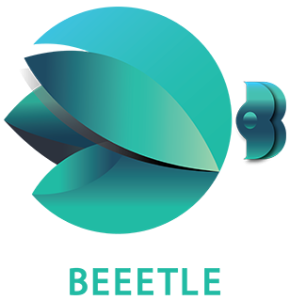How Can Paid Advertising Help You Increase Conversions on Your Website?
- btle_admin
- April 30, 2022
- 11:59 am
- No Comments
Is organic search alone not bringing enough visitors to your site? Do you want to learn about the advantages of sponsored search advertising? Then, you’ve come to the right place if you’re going to learn how paid search advertising can benefit you.
Many well-known platforms are using paid advertising to monetize the data they collect. There is a lot of variety, from famous Google and Bing to disruptors like Facebook and LinkedIn and newcomers like Tik Tok. These platforms have realized that biddable media can generate revenue; they’ve been expanding ad space in recent years.
While possibilities are expanding, the industry is growing more competitive, making it increasingly challenging to rely entirely on organic (non-paid) channels to get the traffic you desire. Businesses are encouraged to purchase advertisements, and they are under pressure to comply if they want to compete in a crowded marketplace. After all, the top spot on Google search results isn’t necessarily an organic result, so competing these days sometimes requires paying to compete.
Because this is the market’s reality, your company should accept it, but it doesn’t mean you have to spend every penny of your advertising budget on paid ads. This page will explain how paid advertising works and how to get the most out of it to meet your business objectives. You can succeed in digital marketing if you understand how it works and tests and optimize it regularly. But it will never be able to realize the potential of paid advertising fully.
Paid ads are an effective digital marketing strategy. However, because the effects are so quick, they’re frequently misused.
When should you employ paid ads? That’s what we’ll discuss in this blog.
What is Paid Advertising?
Paid advertising is an effective internet marketing technique in which advertisers place bids in real-time auctions to have their adverts displayed in specific slots on a platform or network. For example, you can see both shopping and text advertisements in this search for patio furniture.
Biddable media, or PPC advertising, is another name for it. Pay-Per-Click (PPC) advertising is when you pay every time someone clicks on one of your ads.
Earned or owned advertising, in which you can use a platform to promote your content for free, such as Facebook or LinkedIn posts, is frequently in opposition to this approach.
How Pay-Per-Click Ads Work?
Most platforms that offer paid advertising services operate real-time auctions using algorithms. It is algorithms that determine which ads appear in specific slots on the internet. The criteria are usually a combination of the bid amount and the ad quality; however, they might differ according to the platform. On the other hand, the media don’t always clarify the criteria, and there are many additional factors to consider.
Text, photos, videos, and other forms of advertising are all available. In addition, many platforms now allow you to favor ads that perform well with your objectives automatically. Because their algorithms can interpret a much larger number of signals than people can, allowing them to choose which adverts to show is more efficient.
There are several targeting choices available however the, most of them fall into one of two groups:
- Search Advertisements — A form of advertising that appears on a Search Engine Results Page (SERP) in response to a specific query by someone looking for particular keywords.
- Display Advertisements — ads that appear when someone meets specific targeting criteria, such as demographics or interests; they appear when someone is browsing the web or using an app and can be annoying.
Depending on the platform you’re using, these two categories can be merged and matched at times. However, if you have the opportunity, we propose that you analyze their performance separately. Because search advertising is less distracting, they tend to perform better than display ads.
Advantages of Paid Advertising for Business
Biddable Media, Fast-track to More Traffic
Paid advertising is an excellent technique to immediately increase traffic and, consequently, conversions. Investing in Search Engine Optimization (SEO) strategies, on the other hand, takes longer, and you’ll usually notice benefits months after making improvements to your site.
It isn’t to say that PPC is easier to set up and manage than SEO or that you should focus solely on PPC. Paid advertising is a terrific short-term strategy, but SEO should be viewed as a long-term investment for a growing company. As a result, keep a budget for both channels if you can. It’s similar to investing in the stock market in that you must diversify your alternatives to achieve the desired return.
Here are a few examples of how PPC might be beneficial:
- Starters on the Internet – Paid advertising can be a valuable ally for a new internet firm that isn’t ranking highly organically for relevant phrases. By developing a campaign that targets the terms you want to appear for, you can see results rapidly. Meanwhile, it would be best if you focused on SEO for these terms to improve their organic strength. Then you can redirect your PPC budget to terms where you don’t have an organic presence.
- Search Engine Rankings – Paid media can also supplement your SEO strategy for terms when search engine results are highly competitive, pushing organic results to the bottom of the page. It is most common for highly commercial terms critical to your business. Displaying adverts for these terms increases your chances of receiving clicks by appearing twice in the search results.
- Expanding Your Audience — Biddable media is a terrific approach to reach out to those who are unfamiliar with you. With so many targeting choices, you may reach new audiences who may not have previously heard of you and stimulate their interest.
- Retarget Existing Visitors –– Retargeting implies showing ads to people who have previously interacted with your ads or website, even if it’s been days or months since they searched. Many online ad networks allow you to retarget consumers based on various factors. It is an excellent way to lead consumers down the purchasing funnel by giving them adverts relevant to their needs. For example, you can retarget people who have visited your site, people in your CRM, and even people who clicked on an ad without clicking on it.
With Online Advertising, Everything is Trackable
PPC advertising has the advantage of being able to measure almost everything online. However, compared to traditional advertising, such as television or billboards, it’s difficult to assign a Return On Investment (ROI) to these channels because you can’t trace who viewed your commercials or bought what you were advertising seeing them.
You can track what people do on your website with various technologies. Most of these technologies are compatible with the tracking provided by your advertising platform. For example, once you’ve laid the groundwork, you’ll be able to determine if someone made a purchase after clicking on an ad and, from there, calculate the return on your paid activity.
Advertising platforms also provide you with a goldmine of data on your target audience (s). Most media, such as Google, Facebook, or LinkedIn, will provide you with demographic information for people who saw your advertising as a minimum. In addition, you can also obtain information about people’s hobbies, occupations, and other personal information, all of which is anonymized! This information can assist you in better understanding your target audience(s) and maximizing your budget by targeting those who are more likely to be interested in your products or services.
Wherever Your Target Audience is Online, Reach Out to Them
People spend a lot of time online, and traditional media such as television and print publications are no longer as popular as they once were. Therefore, you may give your audience considerably more personalized adverts online than a national TV commercial. As a result, you become more helpful to them and may target people who are more likely to be interested in you, resulting in a higher return on investment for your company.
Advertising platforms are aware of this and can assist you in reaching the right individuals at the right time and in the places where they want to spend their time online. Before you can locate the right platform(s) to advertise on, you’ll need to perform some research and trial and error. Remember that things evolve, so something that didn’t work a year ago can be helpful now. Similarly, after finding a mix that works for your company, don’t forget to maintain testing because it might not always be the best option.
How to Build Your Paid Advertising Strategy?
A lot goes into PPC advertising, and you shouldn’t start your campaigns without first developing a strategy, or you’ll waste a lot of money!
Identify Your Objectives
Before you begin anything else in marketing, you must have a set of objectives in mind. Who are you attempting to contact? What are you trying to accomplish, and what do you want this audience to do? What is the outcome?
There will be a need to use different campaign and ad formats and platforms for other goals and audiences. The media we described can help with this since they link certain movements to specific targets. You usually start your campaign with a plan and then choose from the available possibilities.
Goals can be classified according to your buyer’s journey, as customers require different things depending on where they are in the process.
- Awareness is when someone is still doing research and is aware that they have an issue or a need, but they aren’t sure what to do about it. It will be to reach out to more individuals and inform them about your products or services. Impressions – how many people saw your advertising – and clicks – how many people were intrigued and clicked through to learn more – are two common ways to measure this. You can also evaluate it using engagement analytics, such as how many people liked a post or watched a video after seeing your ad.
- Consideration – When someone has recognized their problem or need, they are now examining the various possibilities available to remedy or meet it. You can still track this by looking at how many people visited your website and what actions they performed once there. For example, did they fill out a form to get a guide, or did they go to other pages to find out more?
Decision
When someone has figured out how they’ll solve their problem or meet their desire, they’re looking for an organization that can help them do so. Sometimes it’s expressed in terms of conversions – do they contact you, or do they buy from you?
Recognize Your Target Market.
Knowing your goal is fantastic, but knowing who you’re going after is even better. Therefore, you should research to learn more about your target customers. Personas, or fictional characters who reflect your ideal customer, can help you achieve this. You define them by knowing who they are and the difficulties and pain point that will lead them to purchase your products or services.
To create effective commercials, you must first understand your target demographic. It will assist you in determining which platforms to use and which to avoid. It will also help you choose the most acceptable targeting options for reaching them and create fantastic commercials that appeal to them.
Make a Budget Plan
Now that you’ve identified your goal and target market, you’ll need to know how much money you have to spend. Despite being given a specific budget, how you distribute it is up to you. Business owners must maximize their budgets to generate a profit since most have limited cash.
The most common blunder made by most businesses is spreading their budget too thinly across platforms or initiatives. Thus, their budgets limit their options, and they do not notice any positive effects. That’s why it’s advisable to concentrate on one platform or one targeting style rather than doing everything at once. You may fully commit to maximizing performance this way. Then, if the findings aren’t satisfactory, you can continue to the next step. It’s all about trial and error in marketing.
Various tools can estimate your cost per click (CPC) and search volume to determine how much advertising on specific phrases will cost you. In addition, when you’re building up your campaign and selecting targeting choices, some advertising systems will also give you an estimate of how much money you’ll need. Although they are generally ambiguous, please pay attention to them because they will offer you a general idea of what to expect. However, you won’t know exactly how much it will cost until you begin advertising.
Which Paid Media Channel Should You Use?
Which of the many available online advertising platforms should your company pursue? To respond to this question, you must have considered your objectives, defined your target audience, and assessed your budget as described in the preceding section. These procedures will assist you in determining which channel is the most appropriate for you.
Wherever They Are, Meet Your Audience
If your audience doesn’t use a channel, it’s pointless to advertise on it. It may seem self-evident, yet some firms focus on a track due to the excitement or novelty rather than determining whether or not their target audience uses it.
If your target audience is HR professionals, LinkedIn is a smart choice because you can target them, and they will almost certainly use the network regularly. On the other hand, if you’re trying to reach middle-aged mothers, Facebook might be a better option because they’re more likely to use it. It is possible to target both groups on Google, which has a much larger audience than Facebook. Google Shopping and Facebook campaigns are attractive options if you want to sell things. However, LinkedIn and Google are usually the most excellent options for seeking leads.
Reach Your Ideal Cost Per Acquisition
After you’ve determined where your target audience hangs out and your objectives, you’ll need to decide how much money you’re willing to spend on leads or consumers. Some platforms may be more expensive than others; however, it’s difficult to tell ahead of time because most operate on an auction system with no fixed rates.
Google can be pretty cost-efficient depending on the market, but you’ll need to perform some keyword research to discover your field’s competitiveness. Microsoft Advertising, formerly known as Bing Ads, is an excellent alternative because it is slightly less expensive. Yet, it may have a significantly lower reach than Google depending on the sector and location you’re targeting.
LinkedIn and Facebook are more expensive than the Google Display and Video networks, but you can usually target more targeted demographics. Do your homework, but keep in mind that you won’t know how much anything costs unless you try it. You’ll have to experiment with the networks until you find the correct combinations.
Before you invest in a platform, figure out how much your average lifetime customer value is to see if your cost per acquisition is too high or if you can afford to spend more on new clients.
How to Begin Using Paid Advertising?
With all of its platforms, campaign kinds, and guidelines, the world of biddable media might be intimidating. To help you get started, here’s a list that summarises what we’ve covered in the preceding parts.
Create a strategy
- Platforms – Determine which platforms your target audience prefers so you may focus your efforts where they are most effective.
- Goals – To target your marketing efforts, create SMART goals (Specific, Measurable, Achievable, Realistic, and Timely). You can then create specific objectives based on these goals and determine which online advertising platforms and campaign kinds are ideal for achieving these goals.
- Budget – Determine the amount of money you have available and how you want to distribute it across platforms and campaigns. Don’t overstretch your budget, or you won’t see any benefits. Instead, be selective about where you spend your money, ensuring that your chosen platforms are appropriate for your target demographic.
You’ll need to figure out how much you can afford to pay for a lead or a client to achieve a good ROI from your marketing. It can help you figure out how much you can bid and whether a campaign is profitable.
Create campaigns that adhere to best practices
You may begin developing your campaigns once you’ve determined which platform(s) will best suit your audience, objectives, and budget. There can be a lot of variables and alternatives depending on the forum. Make sure you understand what you’re doing, or hire professionals to do it for you. You want to stretch your budget as far as possible, and getting one setting incorrect can cost you a lot of money!
- Analyze and test
To optimize your campaigns, review performance frequently – every two weeks is usually the ideal approach. Keep in mind that every campaign is a test. You’re putting hypotheses to the test to see what works best for your company. Move on to the next test if something doesn’t work. Also, while a campaign may perform admirably for some time, things change. By staying on top of your campaigns, you can ensure that they change.
Remember that the success of your search advertising strategy depends on how you manage it. If you can’t control your PPC campaigns, they will fail no matter how many you start. First, check out our blog for more information on SEO, ad campaigns, and other issues if you like our topic. Then, get in touch with us.
Popular Categories
Newsletter
Get free tips and resources right in your inbox, along with 10,000+ others





